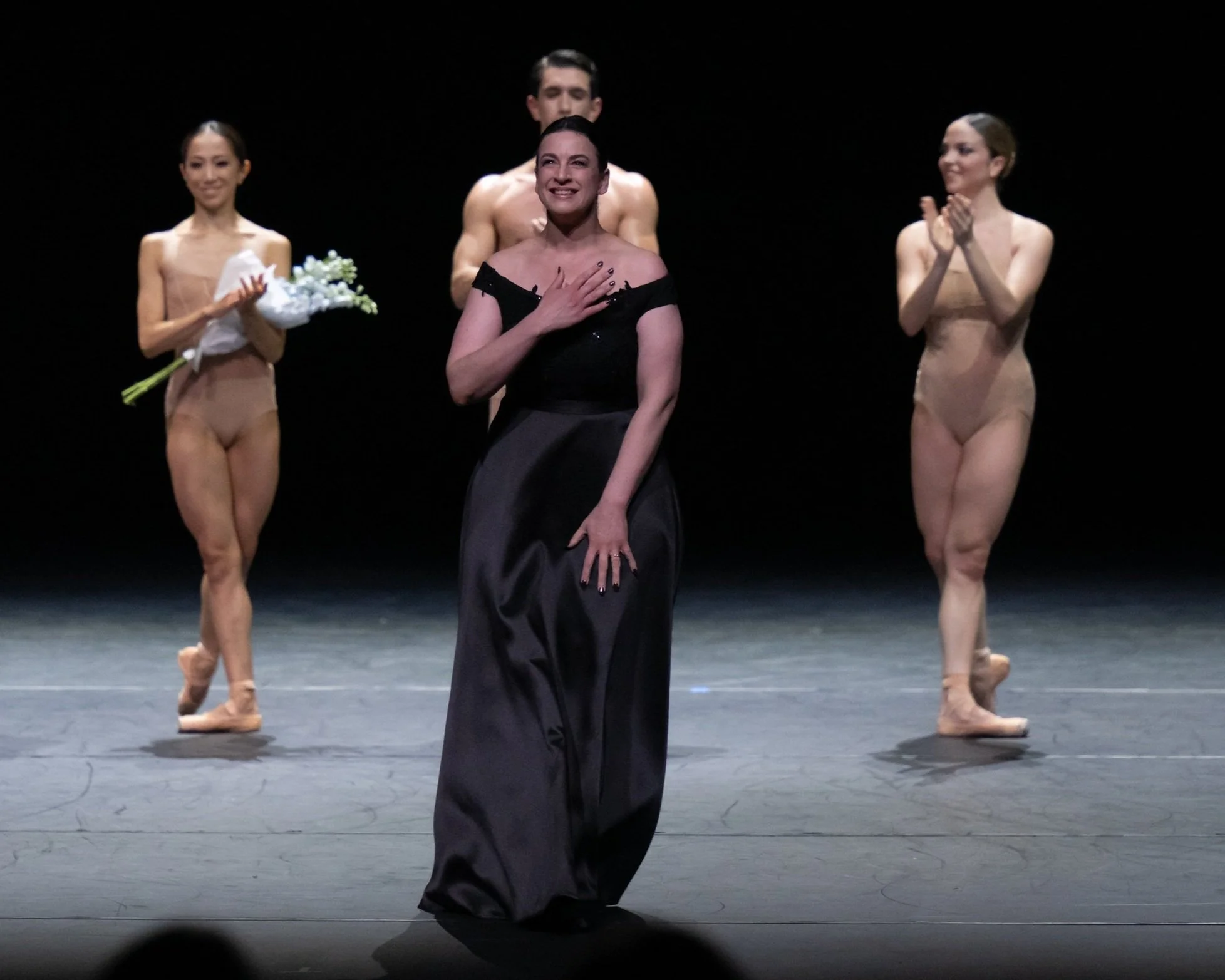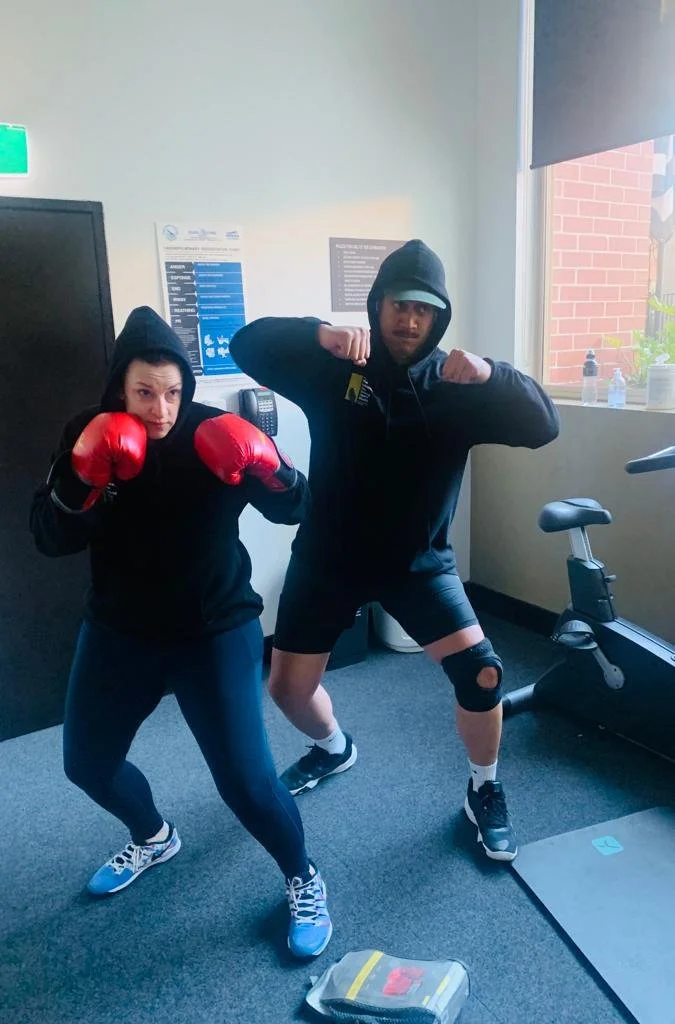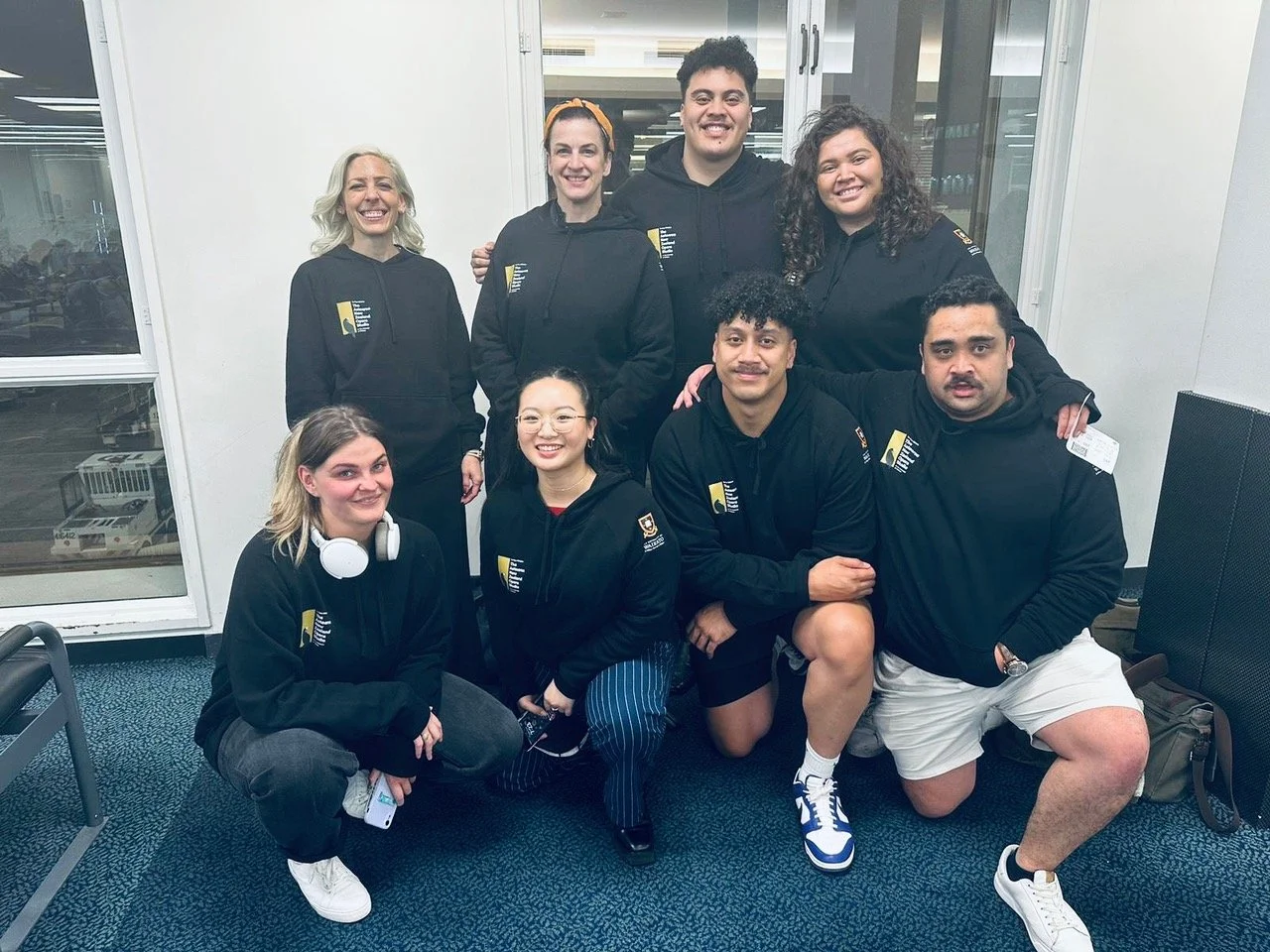Madeleine Pierard: “sumptuous singing” at home and away
Soprano Madeleine Pierard: receiving applause for her performance of Strauss’s Four Last Songs with English National Ballet
Photo supplied
When soprano Madeleine Pierard was a child, she wanted to grow up to be a super-hero. As an adult, she quickly learned that, for a singer, it's easier to be vocally fit if you're physically fit. "I've always been a bit of a fitness fiend and my favourite is boxing," she tells me, "which I've done for years and years. When I was working at the Royal Opera House [from 2010-2012 she was Jette Parker Young Artist with The Royal Opera, Covent Garden] I became hyper-aware of how much stamina you have to have as a singer and I was at the gym two hours a day, six days a week."
Now mother of three young daughters and head of Te Pae Kōkako - The Aotearoa New Zealand Opera Studio (TANZOS) programme at the University of Waikato, finding time for the fitness required for her international singing career is sometimes challenging. But boxing is still important – and she's teaching it to the singing students at TANZOS. "We have weekly sessions and they really enjoy it - and it's a great way for them to let loose as well."
Madeleine Pierard with TANZOS student Alfred Fonoti-Fuimaono
…vocal fitness requires physical fitness
Most people would need super-hero powers to deliver Pierard’s upcoming professional engagements, but this well-organised and brilliant singer has what it takes to pull it all off. We talked just before she headed to London for a major gig with the English National Ballet, singing Richard Strauss's Four Last Songs live with new choreography in one of three ballets in a recent ENB triple bill. Soon after her return to New Zealand, she’ll perform three works new to her repertoire over a three-week period - Dido in Christchurch Symphony Orchestra’s Dido and Aeneas, Sibelius’s tone-poem Luonnotar in a four-concert NZSO tour and, one day after the final NZSO concert in Hamilton, the main female role of Marie in an Orchestra Wellington concert performance of Berg’s expressionist opera, Wozzeck.
“A bout of pneumonia in July knocked me for a six”, she says, “but I absolutely must be match-fit for the Strauss and I’ll continue that way till the end of Wozzeck. The time in London will allow me to be a bit more self-focussed and I’ll be working on all this new repertoire while I’m there.”
As I write this story Pierard is completing her English National Ballet gig in London, eleven performances of Four Last Songs in eight days. Apart from finding the necessary stamina, she’s had to match the famously slow tempi of legendary soprano Jessye Norman, whose recording was used by the choreographer. “I think her tempi are wonderful. It’s a different interpretation from what I would do - I’ve always done them with piano and those big long sweeping phrases work better with the beautiful sustained chords of the orchestra underneath you.” She’s worked with ballet before, while at Royal Opera House. “You’re at the mercy of someone else’s interpretation, but there’s this extra layer of understanding with what you see being expressed by the dancers.”
English critics have praised her “sumptuous singing” in the Strauss ballet season. Mark Monahan of The Telegraph wrote "I found myself drawn...towards the mercurial rapture on the face of resplendent on-stage soprano Madeleine Pierard. And indeed it was she who earned the evening's single most impassioned round of applause." She confessed a few days ago to mixed feelings as the final performances of Four Last Songs approached. “I find myself fairly depressed that I won't be singing this work every day anymore, and reflecting on how magical collaboration across art forms has always been for me.”
Strauss’s songs have a wide range, quite low at times for the soprano voice. “I’m very fortunate to have a wide range,” Pierard says. “A low tessitura is not a problem. I used to be a mezzo. My voice is moving now to a dramatic soprano – in fact, my voice has changed so much I don’t know how I’ve had the career I’ve had. The voice is only now beginning to settle.” A year ago she did a “jump-in” for a concert performance of Beethoven’s Fidelio at the Sydney Opera House, singing Leonore under the baton of Simone Young. “Even sight-reading in that repertoire felt so much like home. I’m feeling less scared of that big repertoire now.”
When NZSO offered her the solo soprano part in Sibelius’s Luonnotar, she didn’t know the work, which she’ll tour with the Orchestra and conductor Gemma New in late October and early November. It was written in 1913, the same year as Debussy’s solo flute work, Syrinx, which is also in the “Poem of Ecstasy” programme, played by NZSO flutist Bridget Douglas.
Madeleine Pierard with the NZSO in 2022
Photo supplied
Luonnotar has been described as “formidable”, "fiendishly difficult” and “cruelly taxing” for the soprano, with its wide range and leaping lines, but Pierard is having none of that. “I don’t think it’s that challenging,” she tells me. “It reminds me a lot of Janáček’s Katya Kabanova, a role I know intimately – the same drama and intensity. It’s very singable - there are lots of high C’s, but it’s strophic, it repeats, there’s nothing straining or strenuous on the voice. It's beautifully written for the voice, and the orchestral parts are also written for balance; you never feel that you have to push or strain.”
Sibelius has set 19th century epic poetry in Finnish, with subject matter from Finnish mythology. Pierard asked the NZSO’s Finnish concertmaster, Vesa-Matti Leppänen, to read the text aloud, which she recorded for study. “It’s beautiful, an ancient folk tale. I can’t believe I’d never heard of this tone-poem; what a wonderful discovery.”
Before that comes Baroque opera with the CSO. To my surprise, she tells me it’s her first Dido. “I always had it in my head that it’s a mezzo role,” she says, “but it’s done by both soprano voices and I’m really looking forward to it. I grew up with the aesthetic of the Renaissance and Baroque; my father played Purcell and Handel constantly. It’s such a beautiful role and an immediately accessible language. And I’m excited about working with Baroque specialist conductor Erin Helyard again – I worked with him and Pinchgut Opera in Australia earlier this year.”
Pierard’s performing year ends with another major operatic role, one many people have suggested to her throughout her career. Marie is the common-law wife of the eponymous hero in Alban Berg’s Wozzeck, and mother of Wozzeck’s child. Marc Taddei says he chose Pierard for the challenging role for her “vocal quality, wonderful musicianship, pitch acuity, and vast experience in singing contemporary music – and her acting ability.” Pierard describes the soprano role as “massively passionate” – indeed, the whole opera could be described that way, something of a psychological thriller with operatic themes of love, infidelity, exploitation and murder. In this concert performance, the first time the opera has been presented live in Aotearoa, Pierard is very happy that the role of Wozzeck will be played by her friend and colleague, London-based New Zealand baritone Julien van Mellearts.
British baritone Sir Simon Keenlyside
…his visit to New Zealand to work with students was a highlight of the TANZOS course in 2023
Photo credit: Robert Workman
Perhaps the most demanding role in Pierard’s current portfolio is as head of TANZOS. “Singing,” she says “is now my calm place. All the stresses are about that leadership role. It’s a heavy but remarkable burden, and the positive side is that I have full control of what’s offered.” She’s very proud of what’s been accomplished in the first year with the six students in the programme. “I can make it fully bespoke; I can see what each student needs and respond to that.”
A highlight of the year was the visit of British baritone Sir Simon Keenlyside to New Zealand to work with the TANZOS students. “For baritone Alfred Fonoti-Fuimaono that would have been a ‘pinch-me’ moment he’ll never forget,” she says. “He’s been listening to Simon ever since he started singing. To have this singer he admired so much say to him ‘You have a beautiful voice. Come and work with me in London any time you are there,’ was out of this world. And for all of them to see how generous and human Simon is as a person, and also flawed, at his own admission; he was very open about how he struggles with his own self-saboteur moments.”
A major TANZOS highlight was a visit to Sydney for the whole class, some of them on their first-ever trip out of New Zealand. Pierard tells me how she sat in their auditions at the Sydney Opera House “and bawled the whole way through, I was so happy for them.” The audition panel had representatives from Chicago Lyric Opera, Scottish Opera and Australian Opera companies. “Until that moment the TANZOS students had been nervous about going somewhere else to study opera or for young artist programmes. They hadn’t had a clear vision of where they wanted to go, or didn’t think they were good enough. For them to see that hive of activity in the Sydney Opera House and Opera Australia, a company doing three operas at a time, the artists so celebrated, was really exciting for them.”
Madeleine Pierard with TANZOS students at the airport before travelling to Sydney
Back row: Havva Focali-Economides (TANZOS Administrator), Madeleine Pierard, Emmanuel Fonoti-Fuimaono, Katherine Winitana
Front row: Rhiannon Cooper, Yufan Cecilia Zhang, Alfred Fonoti-Fuimaono, Taylor Wallbank
The benefits of that overseas visit were huge. “They could see, working alongside young Australian artists, that it was within their reach,” said Pierard. “After that trip, every one of them knew exactly where they wanted to go. I didn’t expect it to be so impactful, but they all have their plans set out.” There’s a positive outcome for the TANZOS programme going forward, as well. “They’re such wonderful ambassadors; Opera Australia wants to do it every year, which is just amazing.”
An achievement worthy of a super-hero, perhaps?
You can read more about TANZOS in my article TANZOS: a springboard for outstanding young opera singers in Aotearoa
Christchurch Symphony Orchestra Dido and Aeneas in concert, Erin Helyard (Music Director), Madeleine Pierard (Dido), David Greco (Aeneas) Carleen Ebbs (Belinda) October 20-21 Tickets here
NZSO “Poem of Ecstasy”, Gemma New (Conductor) Madeleine Pierard (Soprano) Auckland, Wellington, Dunedin and Hamilton October 28 - November 10 More information and tickets here
Orchestra Wellington Alban Berg’s Wozzeck in “Red Moon”, Marc Taddei (Conductor) Julien van Mellaerts (Wozzeck) Madeleine Pierard (Marie) 11 October Tickets here





